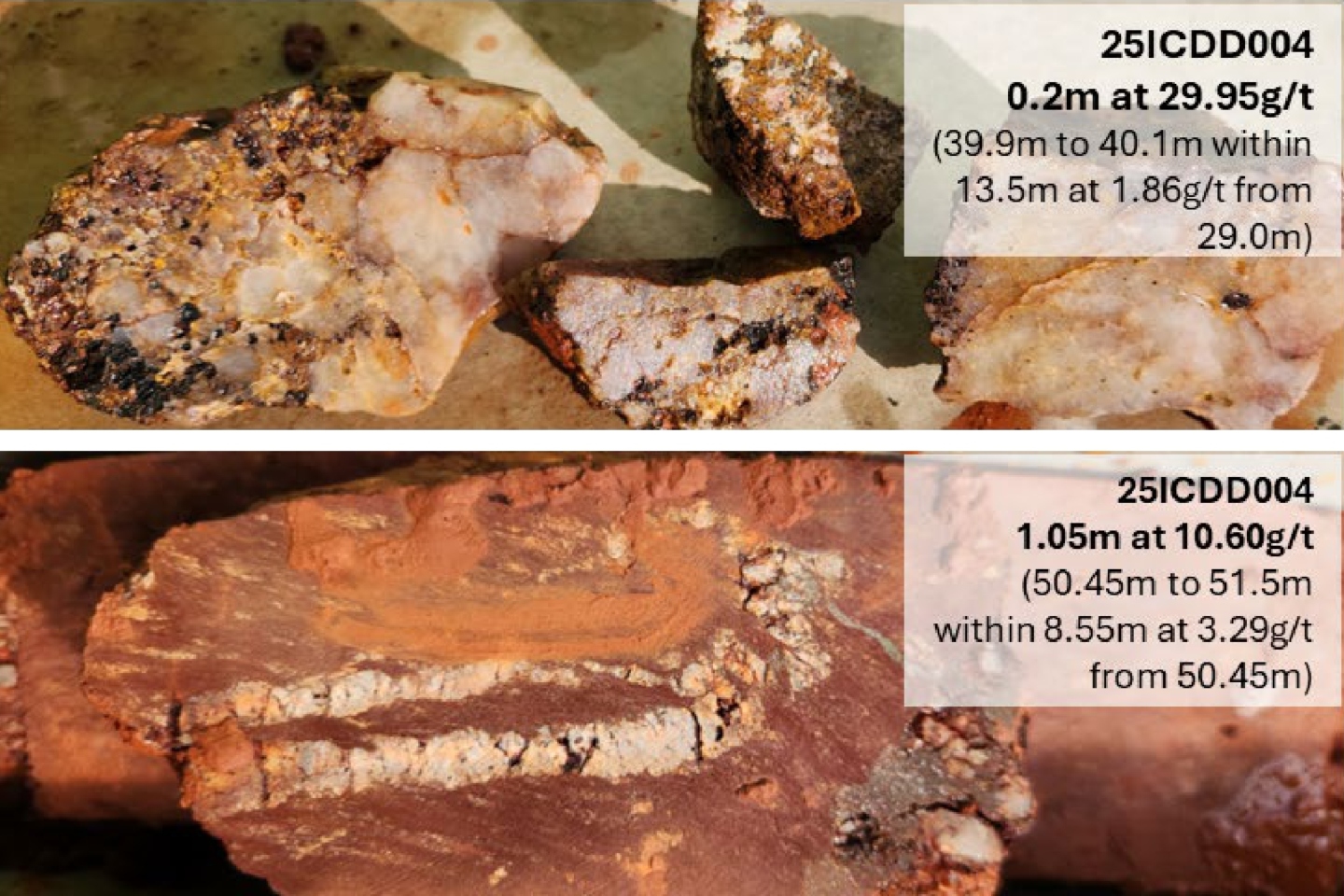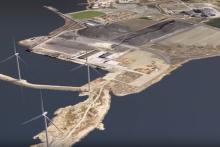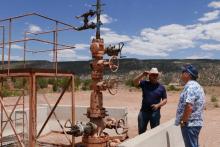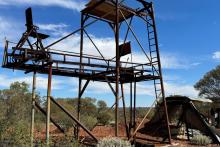Neometals Ltd’s drilling at its Barrambie gold project, 80km northwest of Sandstone in WA, has nailed high-grade gold, with top intercepts of 6.2m at 9.87g/t gold at its Ironclad deposit and 10.2m at 2.72g/t gold at its Mystery prospect. Other gold hits at Ironclad include 14.15m at 3.21g/t and 22.1m at 1.75g/t gold. Further drilling will target resource growth along the 4km Barrambie trend, aimed at mining in 2026.


Neometals Limited has reported high-grade gold results from the company’s inaugural diamond drilling program at its Barrambie gold project, 80km northwest of Sandstone in Western Australia, targeting its Ironclad deposit and Mystery prospects within the Sugarstone Centre at Barrambie.
The top three diamond drill intercepts at Ironclad include a best intercept of 6.2 metres at 9.87 grams per tonne (g/t) gold from 30.8m, including 3m at 19.78g/t.
The second-best hole intercepted 14.15m at 3.21g/t gold from 15.95m, including 3.25m at 11.45g/t and visible gold. A third hole cored out 22.1m at 1.75g/t gold from 18.6m, including 2.4m at 5.95g/t and 2.9m at 4.33g/t.
Other significant intercepts at Ironclad range from 0.1m at 19.01g/t to 13.5m at 1.86g/t, and 8.6m at 2.82g/t gold, including 1.8m at 11.59g/t gold.
The 13.5m at 1.86g/t gold hit includes 0.2m at 26.53g/t gold and 8.55m at 3.29g/t, including 3.85m at 6.69g/t.
These intercepts highlight consistent high-grade zones within shear-hosted quartz and carbonate veins, trending northwest and dipping sub-vertically.
At the historic Mystery prospect, drilling returned 10.2m at 2.72g/t from 83.3m, including 1.45m at 8.97g/t gold, confirming mineralisation below the old workings.
Neometals managing director Chris Reed said: “This drilling is providing important new insights into the nature and controls on mineralisation, particularly the structures hosting the higher-grade zones. It is still early days, but we are excited by the opportunities the Barrambie project presents and are looking forward to the resumption of drilling at Ironclad and Mystery and initial drilling at the Barrambie Ranges mine.”
The mineralisation is associated with shear zones and variably deformed veins, with higher grades linked to northwest-trending structures. Despite challenging ground conditions causing some core loss, sufficient structural data was collected to guide Neometals’ future drilling plans.
The maiden program, completed in May and June, included seven holes for 638.6m put into Ironclad and a single hole for 121.8m at the historic Mystery mine. Ironclad contains an inferred mineral resource of 13,000 ounces at 1.6g/t gold.
The drilling aimed to verify high-grade zones, understand structural controls on gold mineralisation and confirm mineralisation continuity below Mystery’s historic workings.
The company’s tenure over the Barrambie Greenstone Belt spans 505 square kilometres enclosing about 40km of prospective strike which has seen minimal gold exploration since the 1990s, despite gold grades from historic production averaging 24.8g/t.
Neometals is now advancing the project toward a potential 2026 mining decision.
The company is planning further infill and extension drilling at Ironclad to grow the existing 13,000-ounce gold resource, step-out drilling at Mystery and initial drilling at other high-priority targets such as the old Barrambie Ranges mine along the 4km-long structural trend.
Neometals’ high-grade gold intercepts at Barrambie signal a revitalised gold strategy in a historically rich belt. With robust grades and carefully planned drilling, the company’s project is poised for significant resource expansion by 2026.
Is your ASX-listed company doing something interesting? Contact: matt.birney@businessnews.com.au












